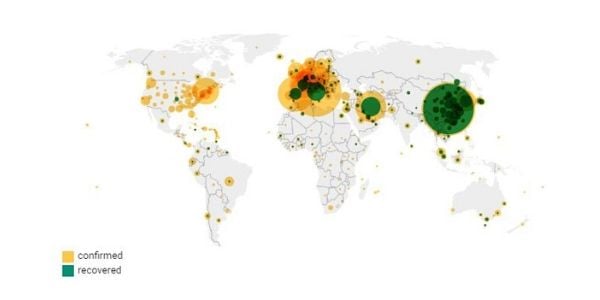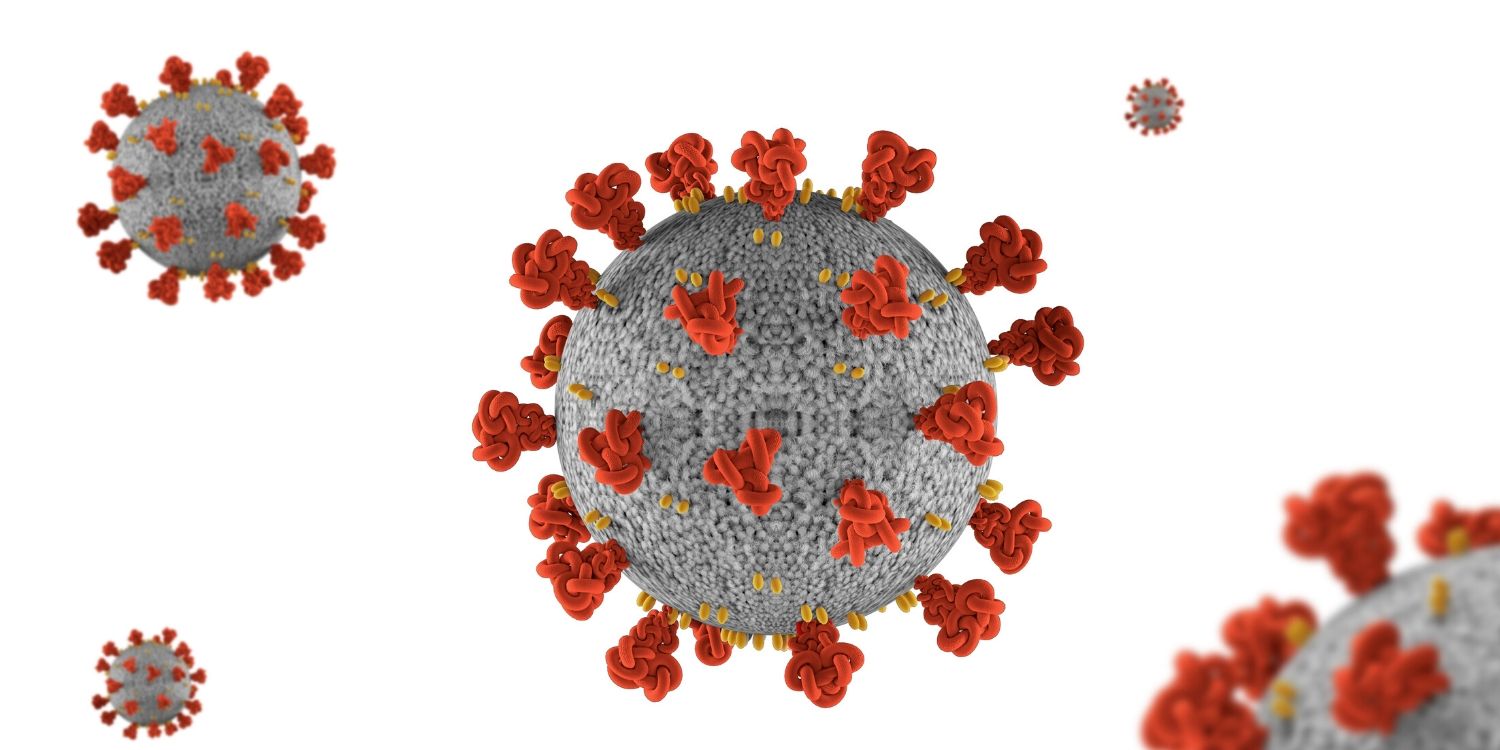The coronavirus pandemic has raised several questions concerning food safety and the possible transmission of COVID-19 through food and foodstuffs.
COVID-19 is considered a new type of respiratory tract disorder based on a new form of coronavirus (SARS-CoV-2). Our current understanding of its transmission is limited. However, it is known that closely related coronaviruses are transmitted mainly through ‘droplet infection’ (inhalation of the emitted droplets from an infected person or animal) and via ‘smear infection’ (the pathogen enters mucus membranes from surfaces, mostly through hands).1
Scientists and respected authorities around the world are closely monitoring the outbreak of COVID-19 and, so far, there have been no reports of transmission through food.2
Nevertheless, the International Food Safety Authorities Network (INFOSAN) continues to investigate the potential of food as a transmission route. They are also investigating the persistence, viability and survival time of SARS-CoV-2, which causes COVID-19, in foods that are traded internationally. The general advice, however, remains to avoid consuming raw and undercooked animal products.3
Preliminary COVID-19 studies suggest its survival on the surfaces might be similar to other coronaviruses, ranging from a few hours to several days and depending on environmental conditions, humidity, temperature, and the type of surface.4 A study by The New England Journal of Medicine looking at aerosol and surface stability and published on March 17, 2020, indicated that aerosol and fomite transmission is plausible. The virus is capable of remaining viable and infectious in aerosols for hours and on surfaces for up to days. The length of viability depends on the type of surface and the amount of inoculum – the longest viability for SARS-CoV-2 was on plastic and stainless steel, compared to other surfaces, such as copper and cardboard.5
These findings provide valuable information for pandemic mitigation efforts. The stability of SARS-CoV-2 has been shown to be similar to that of SARS-CoV-1, the most closely related human coronavirus, as seen during nosocomial spread in 2003.6
.jpg?width=1500&name=Practise%20food%20safety%20(1).jpg)
The European Food Safety Authority’s (EFSA’s) official announcement states food is not likely to be a source, nor a way of transmitting the virus. This conclusion is based on the data associated with previous outbreaks of related coronaviruses (SARS-CoV and MERS-CoV).
Information about the outbreak and risk assessments are being monitored by the European Centre for Disease Prevention and Control (ECDC), while the World Health Organization (WHO) is coordinating global efforts. ECDC confirms that, although the initial infection most probably came from animals, transmission is between humans.7 The Federal Institute for Risk Assessment (BfR) has confirmed that there are no cases showing humans being infected by other methods, such as the consumption of contaminated food.
In regards to the possibility of transmission via surface, BfR added that it is likely to happen only a short period of time after contamination, due to the relatively low stability of coronaviruses in the environment. Additional advice included heating up food as it is well known that viruses are sensitive to heat, and further risk reduction can be performed with thermal treatment.8
The WHO has issued precautionary recommendations, with responses on the topic being provided by the USDA (United States Department of Agriculture). They include following standard good hygiene practices (GHPs) while handling and preparing food – keeping hands, kitchen tools, utensils, and surfaces clean, refrigerating foods promptly, avoiding cross-contamination between cooked and uncooked foods, etc. It also recommends paying special attention when handling raw meat, milk, and animal organs.9
.jpg?width=600&name=Checklist%20for%20Personal%20Hygiene%20(2).jpg) Food Industry Responses
Food Industry Responses
It is believed the epidemic originated with the consumption of wild animals. In response, China imposed a strict temporary ban on the consumption and farming of wild animals at the end of February and, later this year, that ban is expected to be supported by official legislation that will bring this industry under control and prevent future outbreaks. Aquatic wildlife seems to be excluded from this ban.11
Since the beginning of the virus outbreak in China, food producers have been one of the few groups allowed to continue with operations. One of the biggest challenges for them, under the state of emergency, has been ensuring that supply and distribution channels remain open. The limitations on movement have made it difficult to move food and other necessities across provinces. Managing workforces has also been difficult. Many workers didn’t have the necessary permission to commute from their hometowns or were quarantined for a set period before they were allowed to resume work.
Grocery stores and supermarkets were allowed to stay open, but with restrictions on the number of people allowed into a shop at one time. In addition, body temperatures were measured at the entrance (access was based around a limit of 37°C).
Restaurants could remain open but most chose to operate only as meal delivery services at the peak of the emergency. Currently, restaurants that have reopened, besides body temperature checks and a limit on the number of guests (recommended as less than 50 people per 100 m²), have introduced the Green QR code. This is available through a dedicated application for each person and it shows their appropriate status – green, or yellow, and red.
It is worth mentioning that this emergency has seen a significant increase in frozen and processed food, as well as the ‘health-food’ products sales. In addition, food delivery services have flourished, both meals and groceries, and these are trends that look to remain strong.12
Many of these measures are now being replicated in other countries dealing with COVID-19.13
John Hopkins University is tracking the current state of COVID-19 confirmed and recovered cases.14 This information is best illustrated using a map:
Data Processing Difficulties
The rapid increase in literature relating to coronavirus has created difficulties in data processing for the global medical community. In response, CORD-19 has collated a dataset of over 29,000 scholarly articles covering coronavirus, over 13,000 in full text, for the global scientific and AI community. This is a call to action involving researchers all around the world, who are applying natural language processing and AI applications to develop text and data mining tools. This will ensure that machine-readable coronavirus literature collection is kept up to date and optimized for data analysis.16
At this difficult time, it is important to rely on verified sources of information that will prevent fake news and end speculation.17 A good example of this is the quick reaction of the Greek authority and the protection consortium in denying the request for ‘coronavirus free’ certification of alimentary products. This meant the export of the Italian food products didn’t stop at the peak of the coronavirus emergency in that country.18
Besides authorities and government actions and responses, it is of most importance to raise the awareness of the general population, personal judgment and responsibility on this subject.19
Follow-up Reading
Smarter COVID-19 Decision-Making
Protection against foodborne infections in private households (BfR)
What Are the Most Common Foodborne Viruses? (EUFIC)
WHO Q&A on coronaviruses (COVID-19)
USDA Frequently Asked Questions
Viruses in Food, FAO and WHO 2008
2 https://www.efsa.europa.eu/en/news/coronavirus-no-evidence-food-source-or-transmission-route
4 https://www.who.int/news-room/q-a-detail/q-a-coronaviruses
5 https://www.nejm.org/doi/full/10.1056/NEJMc2004973?query=featured_home#.XnEwgvAL804.twitter
6 https://www.nejm.org/doi/full/10.1056/NEJMc2004973?query=featured_home#
7 https://www.efsa.europa.eu/en/news/coronavirus-no-evidence-food-source-or-transmission-route
9 https://www.who.int/emergencies/diseases/novel-coronavirus-2019 & https://www.usda.gov/coronavirus
10 https://www.cfs.gov.hk/english/programme/programme_haccp/programme_haccp_basics_link1.html & https://www2.health.vic.gov.au/public-health/food-safety/food-businesses/food-how-to-keep-it-safe/personal-hygiene-for-food-handlers
12 https://chinafoodlaw.blog/2020/03/17/corona-virus-impact-on-food-industry/
13 https://www.weforum.org/agenda/2020/03/coronavirus-covid-19-hangzhou-zhejiang-government-response/
14 https://www.arcgis.com/apps/opsdashboard/index.html#/bda7594740fd40299423467b48e9ecf6
16 https://www.kaggle.com/allen-institute-for-ai/CORD-19-research-challenge
17 https://towardsdatascience.com/smarter-covid-19-decision-making-39dbff2ab2ba
18 https://news.italianfood.net/2020/03/01/grana-padano-pdo-no-blockade-in-greece/
19 https://towardsdatascience.com/smarter-covid-19-decision-making-39dbff2ab2ba





.webp?width=1644&height=1254&name=Food%20Safety%20Dashboard%201%20(1).webp)
